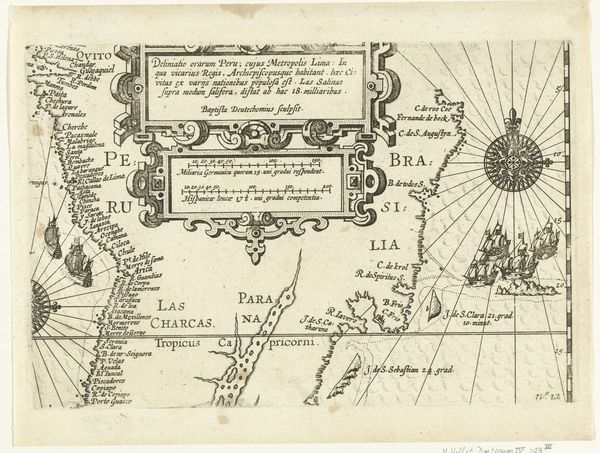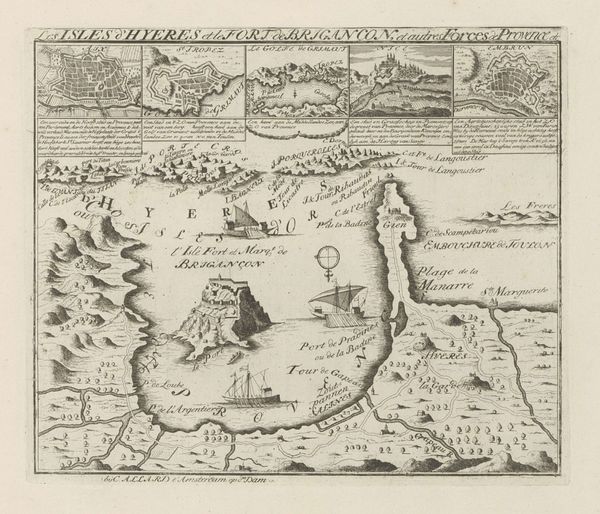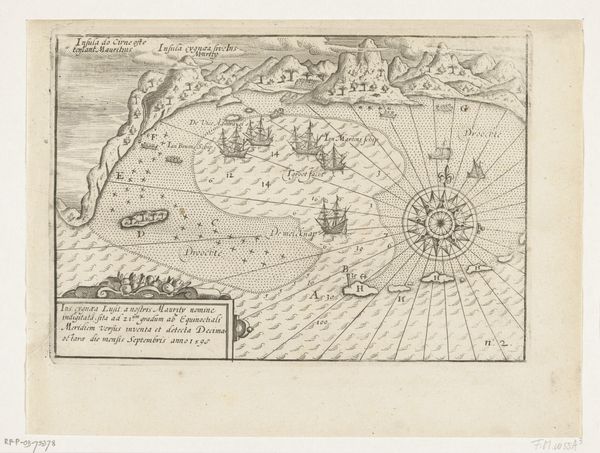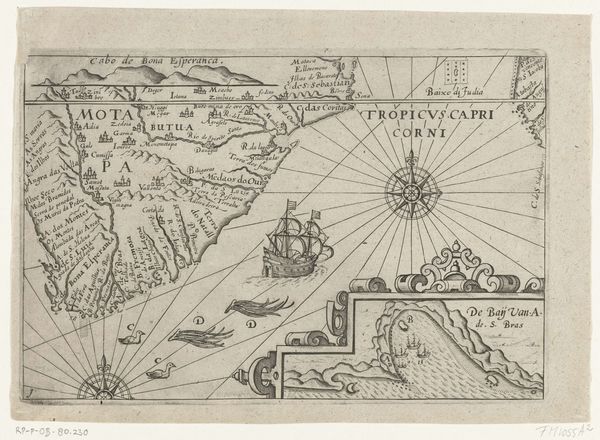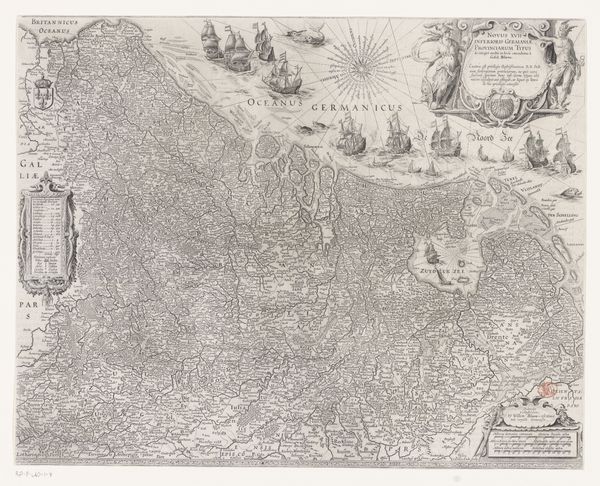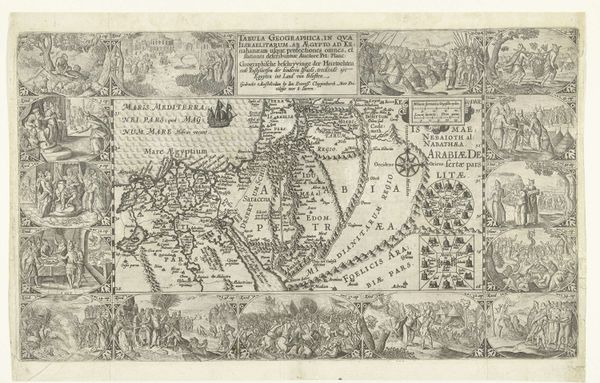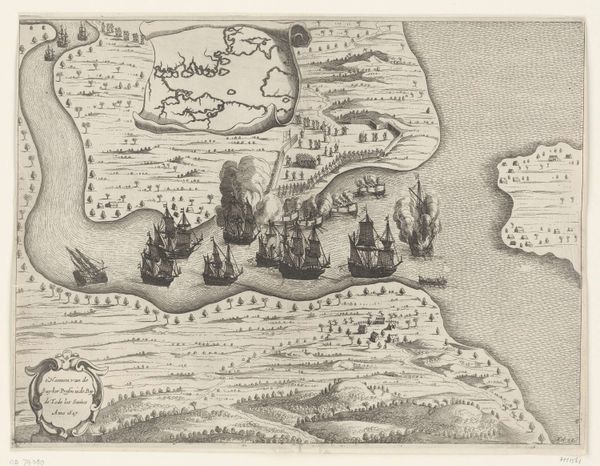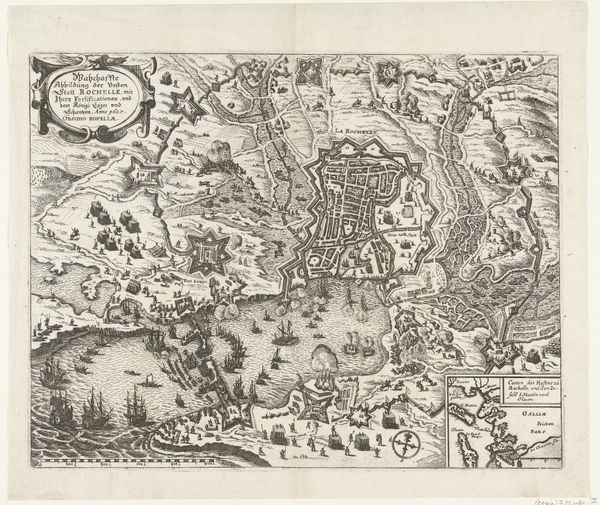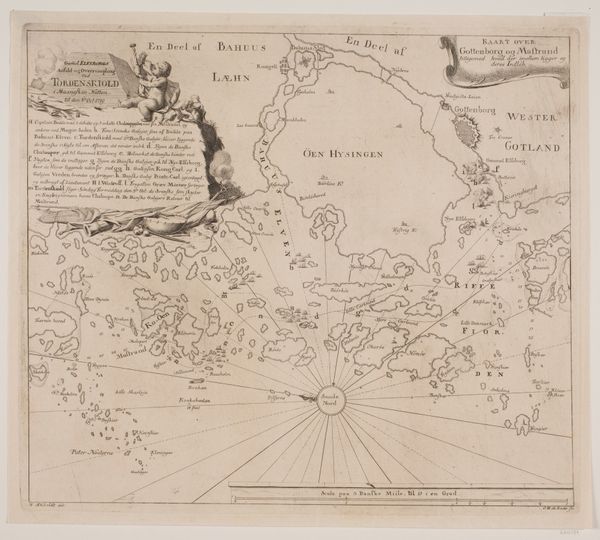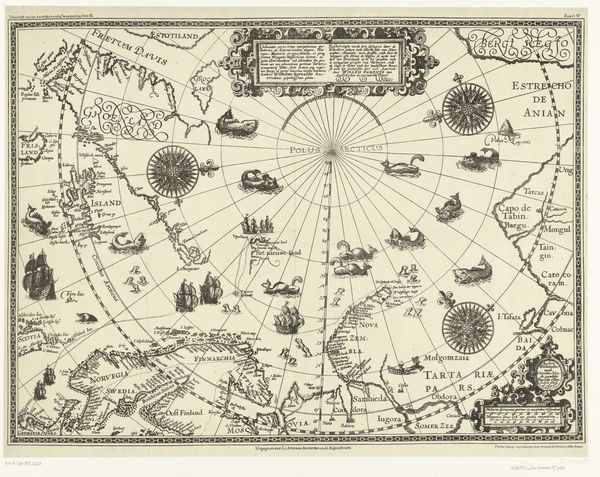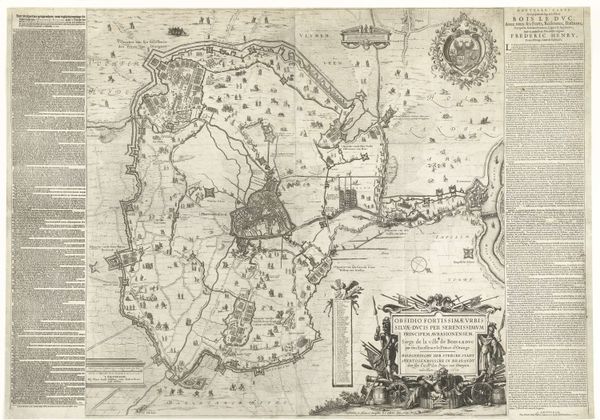
Kaart van de zuidpunt van Zuid-Amerika met de Straat Magellaan, 1599-1600 1601 - 1646
0:00
0:00
baptistavandoetechum
Rijksmuseum
print, engraving
#
baroque
# print
#
asian-art
#
old engraving style
#
landscape
#
geometric
#
cityscape
#
engraving
Dimensions: height 145 mm, width 225 mm
Copyright: Rijks Museum: Open Domain
Curator: We're now observing a captivating engraving titled "Kaart van de zuidpunt van Zuid-Amerika met de Straat Magellaan, 1599-1600," or "Map of the Southern Tip of South America with the Strait of Magellan," created sometime between 1601 and 1646 by Baptista van Doetechum. It’s a fascinating piece held here at the Rijksmuseum. Editor: My first impression is that it’s incredibly detailed, almost obsessively so. The sheer amount of place names and the density of information…it feels very meticulous, but also kind of forbidding. It evokes a sense of vastness, and the unknown, punctuated by small outposts. Curator: Indeed. Van Doetechum offers not just geographical data but also a glimpse into the burgeoning age of exploration and Dutch maritime power. Consider the placement of the ships, carefully rendered and indicative of trade routes. Semiotically, each element speaks to something. Editor: Absolutely. Beyond the precision, what I find striking is the inclusion of the penguin right there in the lower centre! It's almost comical, contrasting against the gravity of the navigational purpose. It humanizes, or perhaps animalizes, this charting project, and injects a dose of the observed experience of these foreign lands, suggesting an encounter more interesting than longitude. Curator: A superb observation. This addition disrupts the purely cartographic function of the work. One might argue that its position signals colonial possession through representing local fauna. Editor: Perhaps, but the penguin isn't labelled as belonging to any one, nor claimed by the map. Also, looking closely, there are wind roses at opposing corners. The engraver’s strategic inclusion emphasizes navigational determinacy as crucial for interpreting the space and suggests an assertion of European navigational prowess. Curator: It's clear Van Doetechum intended to illustrate control and knowledge. Editor: A crucial element is the typography. The different scales and orientations indicate a desire for clarity but also hierarchical value of knowledge itself. The descriptive block in the bottom right becomes like a piece of baroque architecture through how it is rendered. This elevation suggests the centrality of description in consolidating imperial space. Curator: Thank you, you’ve enhanced our interpretation considerably. Reflecting on this engraving, it presents a multi-layered vision: part data, part agenda, but whole aesthetic object. Editor: A remarkable document of a moment in history—and equally remarkable example of printmaking in itself. I think both its clarity and little surprises are what make it an enduring and enticing work to reflect upon.
Comments
No comments
Be the first to comment and join the conversation on the ultimate creative platform.
